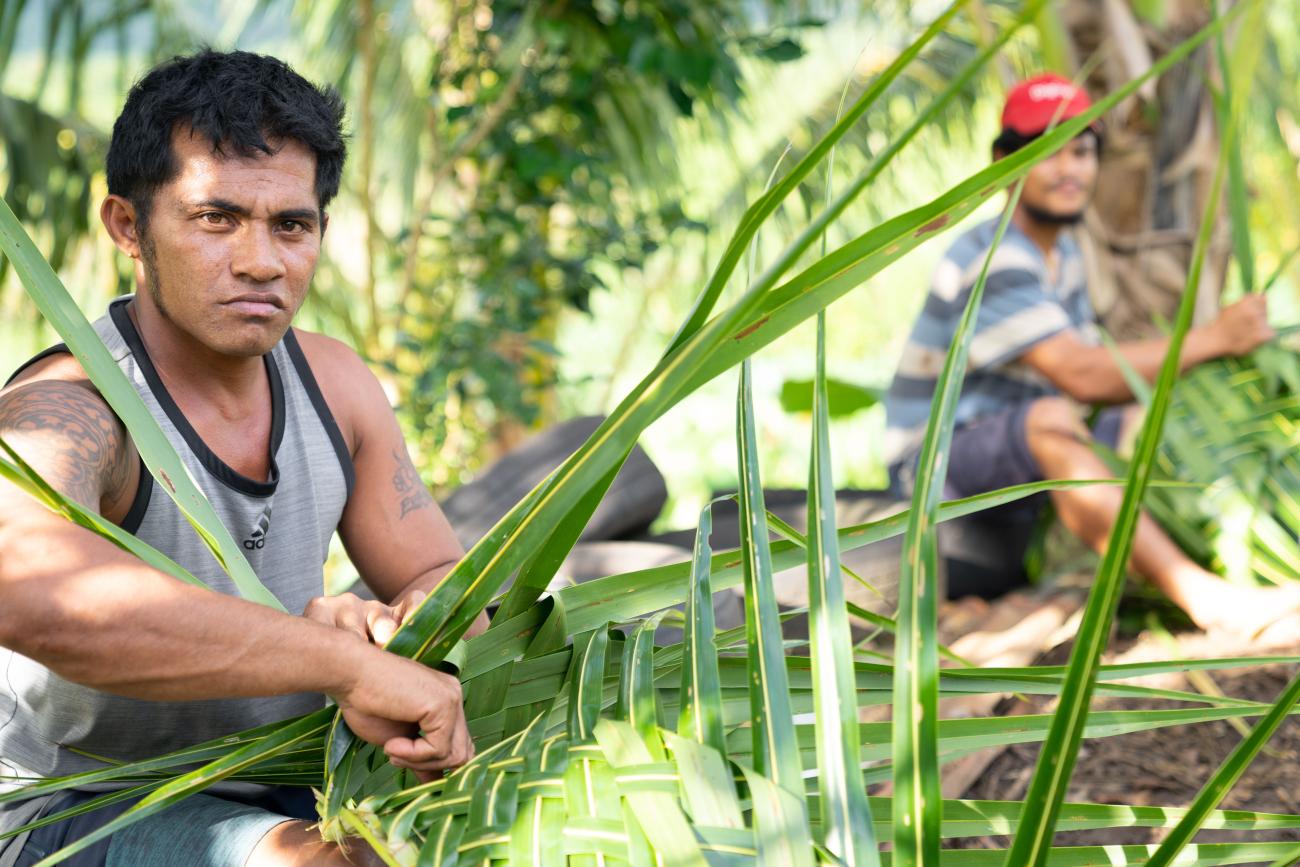SEIA: Understanding how the COVID-19 has upended everyday life in Samoa

The survey data collection was conducted from August to October 2020 and collected information from 22,774 households across the country.
The Resident Coordinator's Office in collaboration with the Samoa Bureau of Statistics has completed the Socio-Economic Impact Assessment (SEIA) to assess the impact of the COVID-19 pandemic in Samoa.
The exercise covered a wide range of topics to understand how the global crisis upended everyday life in Samoa, particularly concerning household income, job loss, government support, access to information, healthcare, mental health, children’s education, public safety and community relations.
The timely initiative resulted in gaining important insights into key issues related to COVID-19 in the aftermath of the State of Emergency (SOE) and border closure. Despite the data limitations, the results showcase how Samoans across the country adjusted their lives and behaviour. The findings are expected to help policymakers and government officials make informed decisions as the crisis continues.
The main findings are summarized below:
Access to information: Most Samoans are well-informed about the developments related to COVID-19 and its spread, relying on television, internet/social media, and radio to access information. The use of the internet/social media is somewhat higher among urban households. In rural households, the use of radio is also prevalent in addition to television and internet/social media.
Similarly, the source of information also varies across age groups, with the use of television and radio increasing consistently with age to replace the internet and social media.
Access to healthcare: Despite the initial strict lockdown and continuation of the SOE, the number of Samoans facing difficulty in health services or buying medicines has been extremely small – only 3% of households faced a challenge seeking health services and 2% in buying medicines, indicating no disruption in healthcare/medicine provision as the SOE continues.
Among the few households that faced difficulty in seeking healthcare, the main reasons were due to lack of cash, increase in drug prices and shops simultaneously running out of medicines. Limited transportation was also a factor for some households, particularly in Savai’i.
Job loss and household income: Nearly 11% of the households across Samoa had at least one member lose their job due to measures related to COVID-19. The job losses were distributed uniformly across the formal and informal sectors and had various degrees of impact on household income. However, most of the households only witnessed a slight or moderate decrease in income.
Moreover, 17% of the respondents also reported a decrease in their personal income due to the continuation of the SOE, with a slightly higher share among those with higher education. To cope with the financial stress, a considerable proportion of affected households relied on domestic farming and remittances from friends/family members.
Government support: As part of the emergency response, the Government of Samoa announced a stimulus package in April 2020 that included a nationwide reduction in electricity tariffs. In addition to these tariff reductions, nearly 11% of the households also reported receiving additional support from the government during the COVID-19 pandemic. However, the need for further support among recipients was considerably high, especially concerning fulfilling their immediate needs.
Among the households receiving additional assistance, 68% said they would like to see the government provide cash transfers to residents, while 61% said they would benefit from food packets to cope with the crisis. The additional support provided by the government was also insufficient to significantly boost household income, as only 10% of households receiving such support said their income had increased much as a result.
Food security: There was no major issue related to food insecurity or disruption in the food supply/production, with most of the households being able to purchase food items when needed. Even among the small number of households facing difficulty in buying food, the reasons were mainly due to lockdown measures rather than lack of cash or increase in food prices.
Approximately 70% of the households also reported no change in their consumption despite the economic crisis. Even among the households consuming less over financial concerns, the incidence of extreme hunger was relatively rare. In most cases, household members ate less or not at all only on some rare occasions.
Education and remote learning: Across Samoa, nearly one in five children were not able to receive any education at home during school closure. The distribution of those receiving an education was also uneven across the country, with children in urban areas attending schools remotely at a significantly higher rate than their peers in villages.
Online learning platforms were available to 24% of the school-going children, even though a larger share of children (48%) had access to electronic devices such as computers/smartphones/tablets. There was also a strong demand for online schooling among households, with over half of the households saying they would like to have more online equipment provided by the schools for remote learning, while 30% expressed the need for an online platform in general.
Public safety and community relations: Despite the continuation of the SOE, communal relations and public trust in Samoa remained largely unaffected, or even improved. Only 4% of the households reported that their relations within and outside their community had deteriorated due to COVID-19, while nearly 60% of the households reported no change and one-third said their relations had improved within and outside their community. Similarly, the perceived threat of physical violence in the community was also largely absent among most of the population.
Likewise, most Samoans indicated that the situation concerning other crimes and safety issues, such as theft, verbal abuse, violence/intimidation by police, conflicts, vandalism as well as domestic violence, had either stayed the same as before the pandemic or improved during the state of emergency. Overall, only about 6% of the households reported deteriorating crime compared to the situation before the COVID-19 crisis.
Read or download FULL REPORT
















